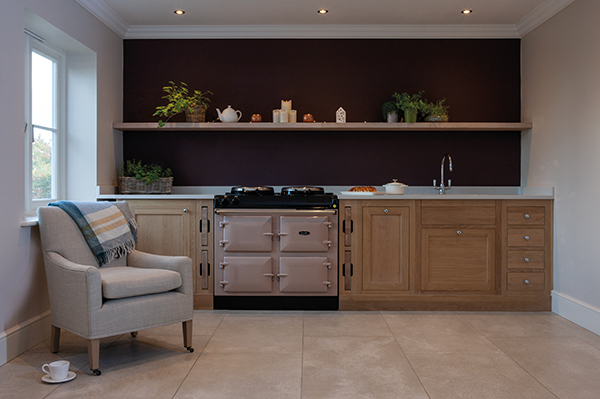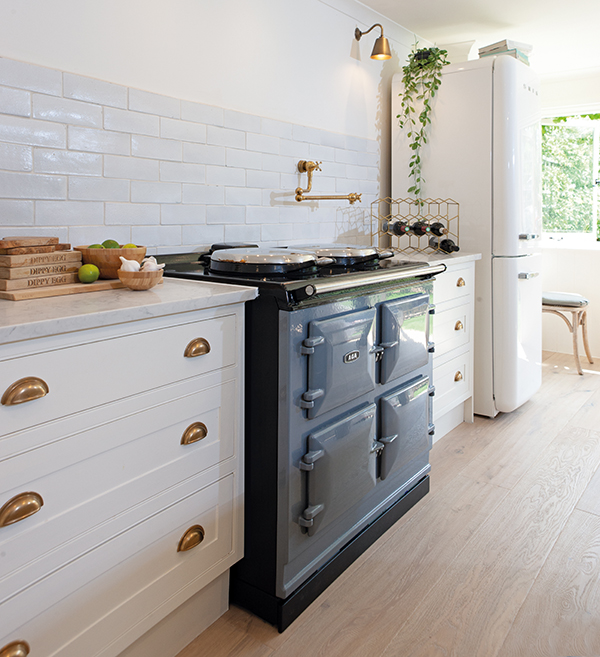As part of our 100th birthday celebrations, we’re taking a look at the trends that will take us into the next decade. This month we’re focussing on social trends and looking at the bigger picture…
Being present
In a world full of distractions, it’s difficult to be fully present. Perhaps that’s why mindfulness continues to grow as a trend. As well as attending mindfulness classes and using apps, we’re now looking to be present during everyday tasks. So, rather than cooking dinner while half watching TV or scrolling through Twitter, we’re increasingly looking to focus wholly on the task in hand. According to meditation experts, Headspace, mindful cooking allows you to anchor the mind and focus your attention on the sensory experience, concentrating fully on the sights, sounds, smells and textures of the food you are preparing.

Loving where we live
According to an ONS study, 56% of Brits said that the pandemic gave them a sense of belonging in their community. This has led to us becoming closer to our neighbours, having more pride in the area we live in, and wanting to support local shops and restaurants. AGA has stores across the country and it’s well worth checking for open days and demonstrations as they offer a great way to meet local people plus, you can find out all about AGA cooking too.
Nostalgia

Uncertain times create a need to tell ourselves stories about ‘the good old days’
to give a feeling of continuity and security. Mintel research recently found that consumers worldwide are appreciating things that remind them of their pasts. We will continue to see this in all areas, from the metaverse to brands creating products using the latest technology alongside more old-school design. This trend also takes in vintage furniture and clothing, as well as buying products made today using traditional methods of manufacture. We will continue to look for things made by skilled craftspeople, rather than the mass produced. A hundred years in, today’s AGA cooker still looks remarkably similar to the very first model, but beneath the cast-iron exterior there is now state-of-the-art technology allowing the control of energy use and modern additions such as induction hobs and fan ovens.

Intentional living
We’re so used to companies having mission statements and a set of values that work as a framework for everything they do, but we’re only just beginning to do this in our own lives. We’ll see this trend continue to grow hugely over the coming decade. We’ll choose to buy products only from brands that align with our values and choose the companies we work for based on their bigger stated aims. We will also value living in an intentional community where everyone is working toward the same goal. Essentially, we’re moving away from ‘muddling through’ and are looking to curate lives that offer more meaningful exchanges.

Wellbeing revolution
From waking up to the importance of good sleep through to wellness
coaches at your local GP surgery, the next decade will be one where we take our wellbeing ever more seriously. This macro trend will be fuelled by a million microtrends – from the way we scent our homes and offices to provide maximum relaxation or performance, to employing a sleep coach or taking up a meditative practice. One thing is for sure: we’ve realised our health and wellbeing is in our own hands and there is a real drive towards making it a central pillar of our lives.

Enough
We’re becoming tired of mass-produced products and are worried about the effect they have on the environment. We all know that fast fashion, microplastics, and items that need to be replaced every couple of years are doing great damage to the planet and our physical and mental wellbeing. We’ll be looking to buy less but better, investing in items that are designed to last. Essentially, we’ll be looking to embrace frugality 21st century style. This means we’ll be looking for long-lasting, circular products that add rather than take away. The AGA cooker is a great case in point here: it’s made from recycled materials, lasts way longer than conventional cookers, and when it reaches the end of its long life the cast-iron parts – which make up most of the cooker – can be recycled.
Inclusive design
It’s undeniable that society needs to do better when it comes to inclusive design. After all, designing accessible spaces for a diverse range of people means the end result is usually better for everyone. Expect to see public spaces that include accessible interiors, sensory friendly design, and disability friendly tools. At home, accessible design is about to explode too. As multigenerational homes become more prevalent, we will need to adapt some spaces to be friendlier to aging parents/grandparents. We’re not willing to compromise on design, though, so we’ll see an end to hospital-style wet rooms and instead we’ll have beautifully designed, functional adaptations that bring joy.

Co-living
In many expensive cities co-living is becoming ever more popular but although money plays a big part in choosing to live this way, co-living spaces feel anything but cheap. Instead, they offer a high-end living experience. Residents share communal living spaces and kitchens, and often the
monthly rent in co-living spaces will include laundry, TV subscription services, a communal gym, yoga classes and more.
Subscription living
Subscription arrangements over purchasing will increase. This will be on an informal basis, such as those in a neighbourhood deciding to co-purchase items such as lawnmowers, DIY kit or even a piece of occasional kitchenware, or on a more commercial basis. Examples here include car leasing services that allow us to drive the car we need when we need it. This might be a sporty version for a weekend away or a large SUV to move a child to uni.
Cocooning

This is a trend that has been going for decades but isn’t going to end any time soon. It is an anchoring trend, where we look to our homes to envelop us, keep us safe and offer more than they ever did before. It may seem counterintuitive that after a couple of years of having to stay home, we’re actually wanting to do even more of it, but it’s true. We’ve become more selective about where we go out and are putting our time and energy into creating a cocooning space at home. This has extended to our gardens, where we are creating outdoor kitchens, lounge areas and edible gardens.










